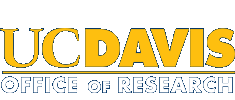Prepare Proposal Components
Internal Approval
Templates and Samples
Incorporate Partnerships and Subawards
Other Resources
Internal Approval
Before submitting to a funding agency (i.e., sponsor) all proposals for extramural funding must be submitted through the Sponsored Programs Office (SPO) for review and submission. The Sponsored Programs Office requires an internal processing form and a minimum of five business days to review proposal elements before submitting to the sponsor.
The only exception to Sponsored Programs review are pre-proposals that do not require an institutional signature or submission by an institutional official, and Limited Submissions pre-proposals that are reviewed internally. Once a limited submissions application is nominated for submission to the sponsor, it will need SPO review.
Elements of a Proposal: Templates and Samples
The Proposal Development Services team has developed guides and resources for completing many common proposal elements for several sponsors.
Visit our Research Development Toolbox (CAS login required) to access Templates and Samples of common proposal sections including:
- Project Description/Research Strategy/Project Narrative
- Project Summary/Abstract
- Biographical documents (biosketch, current and pending support, etc.)
- Facilities and Resources
- Data Management Plan
- Human Subjects section writing guides
- Vertebrate Animals section writing guides
- Mentoring plan for postdocs or graduate students
- Plans for Diversity, Equity and Inclusion (e.g., DOE PIER Plan, NSF Broader Impacts, NIH PEDP)
- Technology to Market or Intellectual Property Plan
- Evaluation Plan
The Research Development Toolbox also includes guides and suggestions for improving your grant writing, information on specific sponsor priorities and funding areas, and best practices for securing extramural funding.
If you don’t see something you need, contact the Proposal Development Services Team (formerly known as Interdisciplinary Research Support!
Incorporating Partnerships, Subawards, and Consultants in your proposal
Researchers at UC Davis often find that their research and other projects can be enhanced by partnering with other individuals or institutions. The Office of Research can help you find, develop, and formalize such partnerships.
- Resources for finding collaborators and building partnerships
- Resources for including a subaward or consultant in your proposal
Proposal Requirements: Additional Resources
Below you will find information and resources at UC Davis for some common proposal requirements
Cover Page/Face Page and Table of Contents
Many sponsors require a cover page with the signature (either ink or electronic) of an authorized institutional representative, such as an analyst in the Sponsored Programs Office. For most sponsors, the cover page is incorporated into their electronic Research Administration (eRA) submission portal.
If the sponsor does not provide a cover page form, USE THIS ONE (http://research.ucdavis.edu/wp-content/uploads/Form-205A-Sample-Cover-Page.pdf)
Data Management and Sharing Plans
UC Davis has several resources for developing a Data Management and Sharing Plan:
- DMP Tool (3rd party site)
- UC Davis Library Research Data Management Guide
- UC Davis Clinical and Translational Science Center (CTSC) Data Management information
Compliance Documents
Depending on the specific project and sponsor, the researcher may also need to complete a variety of compliance documents.
- The Compliance Items page provides a list of compliance items the Sponsored Programs Office (SPO) will look for when a proposal is submitted.
- Research Ethics and Compliance Office (RECO) can help you determine whether you need to submit a Financial Conflict of Interest form prior to proposal submission.

